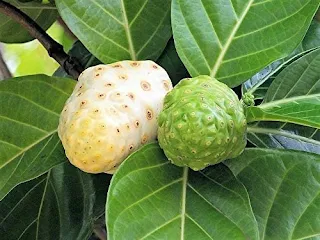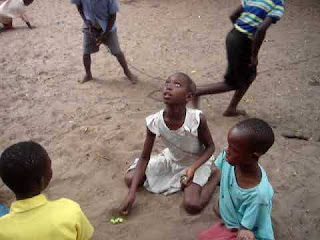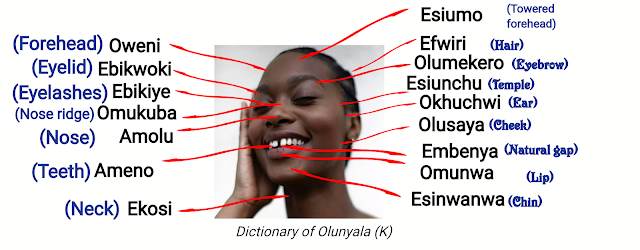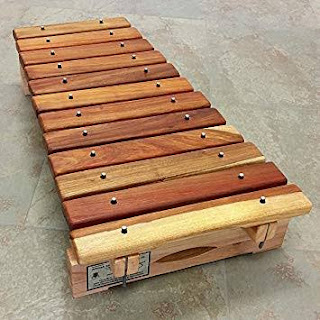ABANYALA BA KAKAMEGA: Names of Edible Fruits.
By Mr. Balovera Edwin Ongacho
Abanyala ba Kakamega have names for various edible fruit in Olunyala (K). Though fruits are called ebiamo, the Kiswahili word amatunda is now greatly used.
Among the Abanyala traditional community, it was unheard of for a day to end without one eating a fruit. Unlike other meals such as ugali that had specific times for eating, fruits were eaten where they were found, and a few carried home. Specific fruits were also used as meals for the sick as part of prescribed medication. It is worth noting that nobody owned fruits on a fruit trees- even if the fruits tree was in another person's home.
The following are some of the names of the edible fruits in Olunyala (K).
A) NAMES OF COMMON EDIBLE FRUITS IN OLUNYALA (K)
- Amakoyakoye- Paulinia pinnata L. The fruits reduced incidences of diarhoea and heartache.
- Amaloobaswa- Lannea edulis. They are now almost extinct due to overexploitation. They were common in raised dry grounds such as old anthills and rocky hills. They have a single small seed in the middle. Good meal for people with stomach upsets and those recovering from sexually transmitted diseases. Also a great assets in stabilizing the size of the birth canal before and after birth.

Amalobaswa - Amachuku- air potato. They are eaten after cooking. It root tuber is called eseebe. They were believed to be medicinal for respiratory diseases, energy in men, stomach problems and some ulcers. They also cured unnatural yellowing of the skin.

Amachuku - Amakanda ka owang'i- have black seeds with white juicy paste.
- Amakhamba- A type of banana whose fruit has hard black seeds. They are called seeded bananas or Musa brachycarpa. It was consumed to reduce the effects of excessive urination that caused thirst and fatigue.

Amakhamba - Amakhuwa- Tamarinds. Believed to be medicinal in managing over-wheight, endwaasi, heartaches, fatigue, constant urination and upper chest pains. Its sap was put in bath water for royal wives to make their skin to glow.
- Amalekhuula- butternut gourd. Good for those aiming at reducing weight and obesity.

Amalekhula - Amangalamwe- desert date palm fruit.
- Amasima-bakeni- Securidaca longipendinculata Fres
- Amasiteti- Fruits of Grewia trichocorpa or fruits of Grewia bicolor A. Juss
- Amasuukuma- Opundia ficus cactus fruits. They are fruits from the cactus tree. The fruits are eaten when ripe. They are good for heartache, fatigue and frequent urination that comes with blurred vision.
- Amatakho ka basakhulu- crossberry
- Amalondang'ombe- Bridelia micrantha. Usually liked by the children for they reduced cough and throat infections.
- Amaluulu- fruits of white star apple or Chrysophylum albidum. Loved by the elderly for they were believed to cure ailments that came with old age such as chest pain associated with heartbeat.

Amaluulu - Amanyulula- Fruits of Sclerocarya birreas. They were also added to local brew to make it bitter-sweet. The fruits are said to be good for coughs in children and prolonged constipation.
- Ebiberebere- lantana trifolia. The fruits are helpful if taken after heavy meals. The leaves juice is good for indigestion, persistent hiccups and general body pain.
- Ebichakhuchakhu-
- Ebichalalya- miracle berry. The fruit reduces the sensitivity of the tongue to taste bitterness or sweetness making them tasteless.
- Ebisira matakho- pepper vine or fruits of Ampelopsis arborea. They are good at reducing the effects of hungover after heavy drinking.
- Echabungwe- Saba Comorensis or rubber vine fruit.
- Echemwa (amachemwa)- banana

Echemwa - Echungwa (amachungwa)- orange
- Efeneesi- jackfruit.

Efenesi - Efutu- vitex doniania

Efutumbwe - Efutumbwe- vitex payos or chocolate berry. Almost similar to efutu but smaller.
- Efwoche- Annona Senegalensis or sugar apple. Its fruit has a rough diamond like surface (okhwefochola) and usually hard even when ripe.

Efwocho - Efwora- Annona ssp . Its fruit has a smooth surface without diamond like roughness. When ripe, it is soft on touch (okhufworafora)

Efwora - Ekalabasya- star fruit.

Ekalabasya - Ekomosi- Vangueria infausta. Commonly confused as etekesi.
- Ekotolofia (Ovakato)- Avocado
- Ekhaukhau- varieties of wild pears.
- Ekhomeri- Antidesma venosum
- Ekhuyu (amakhuyu)- Ficus sycomorus
- Ekhoomooli- a species of ekhomosi that is fleshy and yummy when ripe.
- Elamaalama (amalamalama- piliostigma thonningii. The fruit pulp was said to be good in reducing heart pain, fracture healing, coughs and stomach pains.
- Ehondo- almost spherical type of pumpkin. The seeds were used to make paste for soup. The seeds from the pumpkin are good source of medicine for prostrate enlargement, male energy and appetite.
- Ekhamba (amakhamba)- seeded wild bananas.
- Eliinda (amaliinda)- Pappea capensis
- Eliongo- long type of pumpkin. It grows (okhweyonga) making a longer extension. Eaten after cooking.
- Emangata-
- Emanganya- dates from palm tree.
- Embingili- lantana seeds.
- Endimu- Lemmon
- Engayu- Tylosema fossoglense. The edible tuber is called omukhayikwa.
- Engutie-
- Enjuli- loquats
- Eombo echusuli-
- Eombo echalamachi- watermelon. The seeds were used to reduce the growth of prostrate swellings.
- Eombo echoko- Choyote

- Eombo netoondo- Coccnia grandis or Ivy gourd. Eaten after cooking. Used by excessively fat people. The fruit and leaves were administered to cure snoring. This should not be confused with another Coccinia species called fruit of eombo lia nanjukha (eombolia) that is not eaten.
- Eombo Namacheke- Thorn melon. It was believed to be very medicinal and liked by the elderly.
- Eombo nasundo- Bitter gourd fruit. Used as meal to help clear body poisoning, hung-overs, body tumours, obesity, high sugar level and rheumatic fever.
- Epayipayi- pawpaw
- Epera- quava. Extremely medicinal in nature.
- Epiripiiri- pepper
- Eriinda (amariinda)- Morinda Citrifloria. Almost similar to efwocho but turns whitish when ripe.
- Esaabale (amasaabale)-
- Esaaiye (amasaaiye) also pronounced as amasalire. The fruits of Aframomum sanguineum. They are of two types based on their colours when ripe.. They were believed to excellent for male energy among ageing men and those receiving treatment from impotence.
- Eseebe-
- Esikamunye- Hoslundia opposita. Eaten by men going for wooing, dowry negotiations or peace talks for they helped to make ones mind sober. Reduces ghost hullucinations when eaten. The fruits are also good for those with cholic pain attacks as well as cramping that comes with bloody diarrhea. The plant is called olukhaniafu.
- Esikakha sikhasi (Enanasi)- pineapple. The fruit was believed to help eliminate intestinal warms.
- Esiitole (amasiitile)- syzygium cordatum. The fruits are very medicinal.
- Eteekesi (amatekeesi)- water pear or zyzygium guineense. Almost similar to owusemwa but slightly bigger.
- Etuunda (amatuunda)- passion fruit. The word has no borrowing relationship with the Kiswahili word tunda.
- Eyembe- mango. The indigenous mangoes were small and almost round.
- Nasio
- Namulwa- Gape gooseberry or physalis vulgaris. Very medicinal in nature for children who drool saliva, anti-cancer and ulcers
- Namulwangutie- Physalis lagascae. Same to namulwa but smaller in size and different in taste.
- Namwelolobero-
- Olukeiaba- Kei apple. It is believed that kei apple was phonetically domesticated as kaiaba.
- Olwabari- mulbery. The red mulberry is called owutiomera and the white mulbery is refered to as awunuku. The were almost common in every home since they were very medicinal.
- Onjoka- Carrissa spinarum fruits. The fruits and every other part of the plant have been believed to have great medicinal value treating more that twenty diseases among Abanyala. Due to this, different parts have different names. The fruit is called onjoka, the entire stem and leaves are called esikata while the root is called wachoonge. That is why we have a proverb: wachoonge ba luyaba . This can be translated as 'Carrissa spinarum is uprooted and put into use by the one in need.'
- Owachakumba
- Owukarambi- wild thorn-less berries such as robus pinatus
- Owunani- wild thorny stemed fruit berries such as blackberries, Rubus apetalus, Rubus roseus, Rubus rosefolius, Rubus niveus, Rubus rgidue, Rubus fraxinifolius
- Owunyambarua- indian plum.
- Owunyumbuti- olive fruits or Olea europaea.
- Owunyungulwe- The fruits of Flacourtia indica or governor's plum.
- Owusangula wukhasi- Rhus vulgaris
- Owusangula wusacha- rhus natelensis
- Owusemwa- water berries.
- Songolamunwa- Dovyalis macrocalyx
- S
B) NAMES OF NON EDIBLE FRUITS ONLY USED FOR MEDICINAL PURPOSES
- Amachaabi- African Sausage tree or Kigelia Africana fruit. The fresh and dried fruits can be boiled with water and given to patients to treat stomach problems, scaly knees disease, stomach ulcers, body sores and wounds, syphilis and rheumatism. Also used for sexual asthenia, infertility, mastitis, edema in legs and hernia.

Amachaabi - Enjulanjula- solanum incanum fruit. Fruit juice is used to kill worms that eat roots of farm vegetable. Juice is also good for mycotic skin rashes due to scabies and ringworms. Also put in colostrum milk to make it clot well and counter bloating (embiye). Crushed seed and pulp used as mouth wash to reduce pain from toothache and gingivitis. Powdered fruit is good in chicken nests to reduce chicken mites.
- Esimuka-
- Eombo lia enjukha (eombolia)- it was called so to scare children from eating it since a large dose of it is poisonous. It is the fruit from the bitter gourd or Cucumis dipsaceus climber. Small bit of its juice was mixed with eggs and drunk to induce vomiting in the event of having swallowed poison.
- Olunani luboro- Toddalia asiatica or African orange cherry fruits. Sap taken and drank to treat bronchial pain, urinal and some respiratory diseases. Also good for male energy.




























































Great stuff. Ochio muno
ReplyDeleteI love this. So wonderfully original.
ReplyDeleteBut add;
Amayanjavakeni &
Malimau. Thanks.
Thanks. I have heard of amayanjabakeni but most elder have a problem pointing out the description of the fruit.Do you have its translation in English, Kiswahili or scientific name?
ReplyDeleteI love the content
ReplyDeleteWonderful. I love this
ReplyDeleteQuite explicit. Can't trace the stuff. Advise on availability.
ReplyDeleteCommebdable research worth a PhD
ReplyDeleteHowever note:
Ripe bananas were not known as amachemwa, but rather, amalafu
The following fruits came with the white man;
Mapera (the Portuguese imported then from Brazil. Mapera is s Brazilian/Portuguese word
Nanasi was brought through the coast by the Portuguese. Nanas is the Portuguese word for pineapple.
Loquats brought by the white man
Passion fruits came with the Portuguese via Brazil
Custard apple, lemons , avocado, all came with the white man. It should be noted that traditionally the Banyala did not cultivate most fruits but relied on those in the wild/forests. Exceptions include bananas, pumpkin